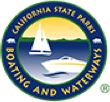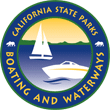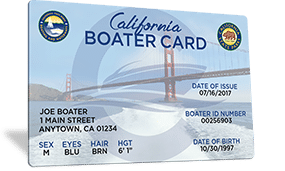
AGE REQUIREMENTS
New California Boater Card Law In Effect Jan 1, 2018
If you operate a motorized vessel on California waterways you may be required to have a California Boater Card. Effective Jan 1, 2018 the law is being phased-in over 8 years. By 2025, boaters of all ages will require a California Boater Card. Currently, all boaters up to 35 years of age require a California Boater Card.
Excellent!
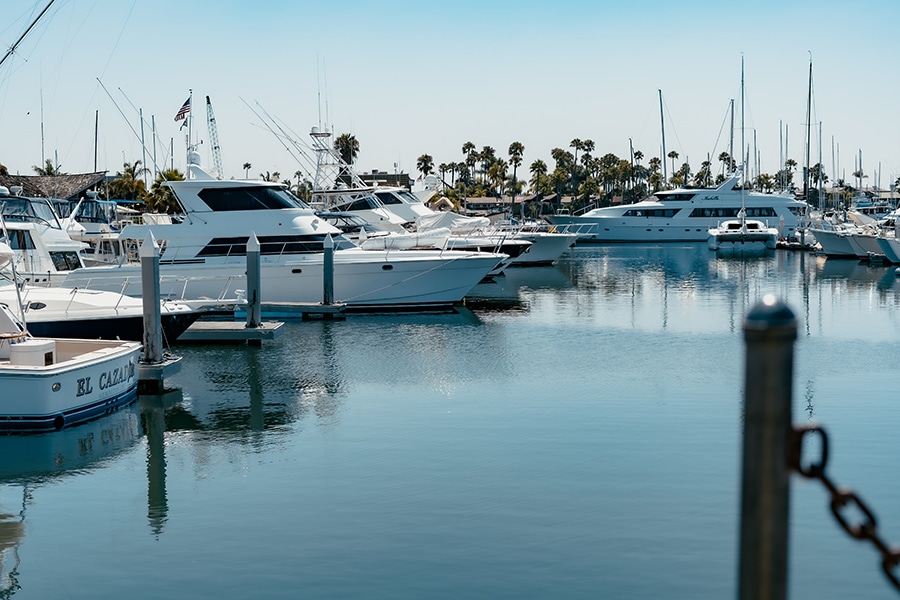

Official California boating course
The California BOATsmart! Boating Safety Course is approved and accredited by the California State Parks Division of Boating and Waterways. With more than 3,000 Five Star Reviews, we’re proud to be recognized as an official California State Boating Course and the choice of boaters in California.
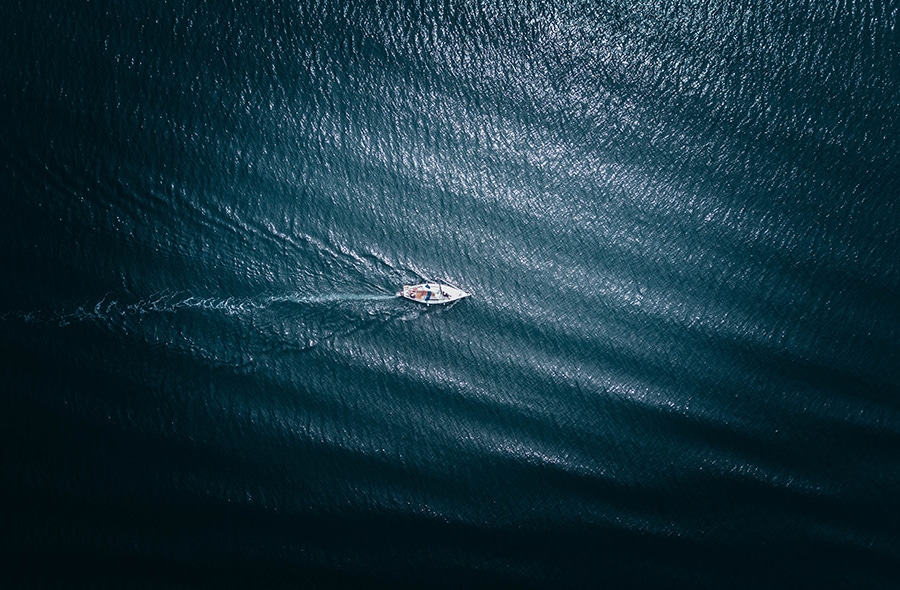

NASBLA & Coast Guard Approved
The BOATsmart! California Boating Safety Course is officially recognized by the United States Coast Guard as meeting the standards of the National Recreational Boating Safety Program. BOATsmart!’s online California Boating Safety Course is approved by the National Association of State Boating Law Administrators (NASBLA) as it meets and exceeds U.S. Boating Education Standards. NASBLA develops education standards for boating safety and represents boating law administrators in all 50 states and U.S. territories.
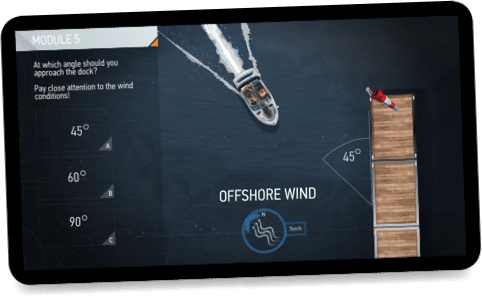
Watch, Listen & Learn
From anywhere, on any device at any time.
Our animated and narrated Boating Safety Course is perfect for all ages. Study from your Smartphone, Tablet or Desktop and switch between devices at any time. BOATsmart! automatically tracks your progress so you can study at your own pace.

CALIFORNIA BOATING LICENSE REQUIREMENTS
WHAT IS A CALIFORNIA BOATER CARD
A California Boat Operator Card proves that you’ve obtained the knowledge needed to safely operate a motorized boat on California’s waterways. As of January 1, 2018, boaters 20 years of age and younger must carry a California Boater Card. By 2025 all boat operators will be required to carry a California Boater Card. Once issued, the card is good for life.
AGE AND HORSEPOWER RESTRICTIONS
In California, no person under 16 years old may operate a boat or PWC with a motor of more than 15 horsepower, except for a sailboat that does not exceed 30 feet in length, or a dinghy used directly between a moored boat and the shore (or between two moored boats).
Youth 12–15 years of age who have obtained a California Boater Card may operate boats with a motor of more than 15 horsepower if they are supervised by an adult at least 18 years of age.
WHERE CAN I GET MY CALIFORNIA BOATING LICENSE?
You can get your California Boater Card by completing the Official BOATsmart! Course online. Once you successfully complete the online study guide and final exam, you can print a temporary card immediately. The California State Parks Division of Boating and Waterways will mail your permanent card within 4-6 weeks.
HOW OLD DO I HAVE TO BE TO GET A BOATER CARD IN CALIFORNIA?
There is no minimum age requirement to take the online course and get certified with your California Boater Card however, there are age and horsepower restrictions that apply to boaters who are less than 16 years of age.
HOW LONG DOES IT TAKE TO GET MY BOATING LICENSE?
It takes a minimum of 3 hours to get your California Boater Card online. Once you’ve completed the online course and official test, you can print a temporary card and go boating right away. Your permanent card will be mailed to you by the California State Parks Division of Boating and Waterways within 4-6 weeks.
CAN I GET REFRESHER LESSONS AFTER TAKING THE CALIFORNIA BOATING COURSE?
BOATsmart! Offers a free online Knowledge Base of the most up-to-date California boating laws and regulations, including boating equipment requirements, navigation and right-of-way regulations and restrictions that may apply on California State waterways.
DO I NEED A LICENSE TO RENT A BOAT IN CALIFORNIA?
Operators of rented boats in the State of California do not require a California Boater Card, however it is highly recommended. Completing a boating safety course and obtaining your California Boater Card will ensure that you have all of the knowledge you need to stay safe on the water.
Boating and alcohol in California
California boating and alcohol laws
It is illegal in the State of California to operate any boat while under the influence of alcohol, drugs or a combination thereof. In addition, no person who is addicted to any drug shall operate any boat, water-skis or similar device.
A person is considered to be under the influence if:
- They are 21 years of age or older and have a Blood Alcohol Concentration (BAC) of 0.08 or higher
- They are less than 21 years of age and have a BAC level of 0.01 or higher
Penalties for drinking and boating
Penalties for a person under the age of 21 convicted of boating under the influence may include a fine of up to $250 and participation in an alcohol education or community service program.
A person 21 years of age or older, who is convicted of operating a boat while under the influence will be subject to up to a $1,000 fine and up to 6 months in jail.
California Boating Age Requirements

Between 12 and 15 years of age
All boaters in California between 12 and 15 years of age require adult supervision (18 years of age or older) to operate any motor powered vessel greater than 15 horsepower, including personal watercraft.

16 years of age and older
All boaters in California 16 years of age and older may operate a powered vessel greater than 15 horsepower without supervision.

Exceptions
Sailboats under 30 feet in length when using sails for propulsion.
Dinghy when used between a moored vessel and the shoreline or when used between two moored vessels.

California's Boating Fines

Operating under the influence
Up to $1000

Failure to carry California Boater Card
Up to $500
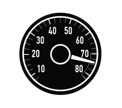
Failure to Report a Boat Accident
Up to $1000

Failure to carry life jackets for children under 13
Up to $250

Hit and Run Boating Accidents
Up to $10,000
General California boating FAQs
Who regulates boating laws in California?
The Division of Boating and Waterways (DBW) is responsible for regulating boating laws in California.
Boating Emergencies:
Call 911 to report a boating emergency in California
WHO ENFORCES CALIFORNIA’S BOATING LAWS?
Boating laws in California are enforced by:
- Every peace officer of the state, city, county, harbor district or other political subdivision of the state
- County sheriffs, park rangers, police officers and other agencies
These officers have the authority to stop and board any boat where they have probable cause to believe that a violation of law exists.
Peace officers are also authorized to order the operator of an unsafe boat to shore if an officer discovers an unsafe condition that cannot be corrected on the spot.

How to register a boat in California
CALIFORNIA BOAT REGISTRATION
Vessels may be registered at any California Department of Motor Vehicles (DMV) location. Upon successful registration the DMV will issue physical boat numbers, a Certificate of Number as well as a Certificate of Ownership. Your registration must be kept on board the vessel at all times. Ensure you keep the registration in good condition – a dry-bag is recommended.
At minimum, boat owners must have a temporary Certificate of Number before they can operate in California state waters. Upon receipt, the permanent Certificate of Number must be signed and carried on-board at all times. All registration fees are paid to the DMV. Vessels are registered for a maximum period of 2 years. After the 2 year period the vessel must be registered again.
The California Department of Motor Vehicles must be notified within 15 days if the boater changes residences. Boat owners are required to keep the title of their boat in a safe place.
THESE VESSELS DO NOT REQUIRE REGISTRATION IN CALIFORNIA
- Vessels 8 feet or less in length propelled by sail (i.e. sailboards)
- U.S. Coast Guard Documented Vessels
- Vessels that are currently registered and kept in another state (if less than 90 days of use in California)
- Vessels that are registered in another country
- Manually propelled vessels such as a canoe, kayak or SUP
- Certain vessels owned by public agencies
- Ship’s lifeboats used solely for lifesaving purposes
BUYING A USED BOAT IN CALIFORNIA
There are a variety of things for California boaters to consider when buying a new boat. The California Division of Boating and Waterways offers a Used Boat purchasing guide to answer all of the questions you may have. You can download a copy at dbw.parks.ca.gov
SELLING A USED BOAT IN CALIFORNIA
A person selling a used boat in the state of California must notify the department within 5 days of the sale of the vessel by submitting a Notice of Release of Reliability, providing the boat information, name and address of the buyer, and the date of sale.
The Certificate of Ownership must be provided to the buyer with the owner’s release signature on Line 1 of the title.
For more information on selling a used boat in the State of California, visit dmv.ca.gov
DO I NEED BOAT INSURANCE IN CALIFORNIA?
Boats in California are not required to be insured, however it is recommended.
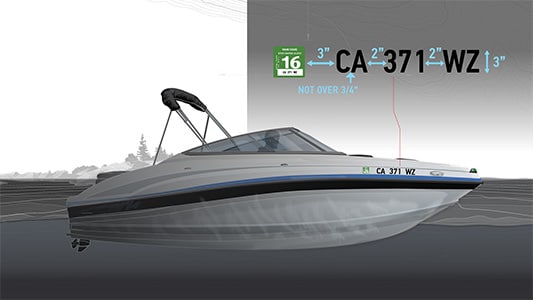
Boats must be properly marked. This is a federal and state of California requirement. Boaters can be fined for a lack of proper documentation and/or display of registration.
Registration numbers must:
- Be affixed on both sides of the bow
- Be block letters, three inches high and in contrast to the color of your boat
- Have spaces or hyphens between numerals and letters
California lifejacket laws

Boats more than 16 ft in length
California boating law requires that you must carry one wearable lifejacket (Type I, II, III or V) for each person on board and have one throwable (Type IV) device on board any boat 16 feet or more in length. These rules do not apply to canoes and kayaks.

Canoes and Kayaks
Canoes and kayaks must carry one one wearable lifejacket (Type I, II, III or V) for each person on board. A throwable (Type IV) device is not required on canoes and kayaks.

Boats less than 16 ft in length
Boats less than 16 ft in length must carry one one wearable lifejacket (Type I, II, III or V) for each person on board. A throwable (Type IV) device is not required.

Personal Watercraft
Operators of personal watercraft, passengers and anyone being towed behind a vessel must wear a U.S. Coast Guard-Approved Type I, II, III or V PFD. Inflatable lifejackets are excluded.

Inflatable Lifejackets
Inflatable Type V life jackets must be worn in order to be legal. Users of Inflatable Lifejackets must follow the U.S. Coast Guard label for limited uses.

12 Years of age & Younger
All boaters and passengers 12 years of age and younger on a vessel that is 26 feet or less in length must wear an approved PFD or lifejacket while the vessel is underway.
Personal watercraft laws & regulations
Do I need a pleasure craft license?
In California, Personal Watercraft (PWCs) must adhere to the same rules and regulations as any other powerboat. This includes registration with the state of California and PWCs must be fitted with a B-1 Class Fire Extinguishers.
Hours of Operation
PWCs may only be legally operated from sunrise to sunset.
Age Requirements
All operators of PWCs in California must be at least 16 years of age or older to operate without adult supervision.
California PWC Regulations
- PWC operator as well as all passengers must be wearing a PFD.
- All PWCs operated on California waterways are required to have a kill switch with lanyard or a self-circling device. The lanyard must be fastened to the operator, his/her clothing or PFD.
- PWC operators cannot wake jump within 100 ft of the stern of another vessel.
- When towing someone (i.e. waterskier, or on a tube) there must be enough seating capacity on the PWC to accommodate the operator, the observer and the person being towed.
- Local municipalities may restrict PWC operation in certain zones. PWCs must operate at slow-no-wake speed at a maximum 5 mph limit under the following conditions:
- Within 200ft of a surfer, diving flag, bank or wading angler, dock, swim float, boat launch, ramp, pier, marina, floating home, moorage area, or boathouse
- Within 100ft of a swimmer
- Within 200ft of shoreline on all lakes, reservoirs, and bays with bathers
Environmental Protection
Non-native Aquatic Species
Non-native aquatic species, plants, fish and animals are invading California’s waters. These pests can increase dramatically under the right conditions, displacing native species, clogging waterways, and impacting navigation and recreation.
Once introduced, they are nearly impossible to eliminate. Hydrilla, Egeria Densa, water hyacinth, quagga and zebra mussels are nuisance species that can be accidentally transported by recreational boaters when caught in propellers, intakes or attached to hulls. Controlling Water Hyacinth and Egeria Densa is a multi-million dollar problem.
Be sure to report new infestations of non-native aquatic species to the U.S. Fish and Wildlife Service at (209) 946-6400.
Help prevent the spread of non-native species
- Inspect all surfaces of your boat and remove aquatic plants or animals before leaving any body of water.
- Ensure you flush raw-water cooling systems and clean sea-strainers before moving your boat from one body of water to another.
- Empty and dry any buckets before leaving a body of water.
- Remove any plant fragments from bait wells, fishing gear, trailers, dive gear or props.
- Dispose of plant fragments and bait into a garbage receptacle on land.
- Avoid chopping vegetation with your boat’s propeller.
- Clean and dry all live-wells prior to transporting your boat.
- Drain all water from your motor and bilge and dry all areas.
- Thoroughly wash your boat, including the hull, before putting it into a new body of water.
- Refer to specific drying times.
Infestations of non-native species
Report new infestations of non-native aquatic species to the U.S. Fish and Wildlife Service at (209) 946-6400.
Quagga & Zebra Mussels
Visit www.dbw.ca.gov for more information on quagga and zebra mussels or call (916) 327-1851.
Golden State, Blue Waters, Good Times

California Boating Destinations
GREAT LAKES, STATE PARKS & FISHING SPOTS
Did you know that nearly half of the world’s coastal Redwood Trees (the world’s tallest living things) are located on California‘s northwestern edge? Yeah, we think that’s awesome too. On top of that, California’s pristine beaches hug the pacific coast all the way from northern Crescent City turf, way down to San Diego in the sunny south. This 840 mile-long stretch of coastline is peppered with surfers, boaters, whales, bluffs and spectacular sunsets. And we haven’t even mentioned the mountainous backdrop… or the sunrises.
So whether you’re visiting a big city like LA or San Francisco, or maybe you plan on visiting a small, cozy town like Ferndale or cool Mendocino, known for it’s great surf, California has a place and a water venue for everybody! So get out there and feel that California breeze.
BEST BOATING LAKES
Where you should plan to launch your boat and hit the water in California really depends on what area of this large state you plan on visiting. But to get you started, we thought we’d name just a few of our favorite places to hit the water in California. They’re popular for a reason.
In our opinion, California’s best boating lakes include: Shasta Lake, Trinity Lake, Shaver Lake and (of course) Lake Havasu and Lake Tahoe.
STATE PARKS
California State Parks offer outdoor enthusiasts 279 parks, 1.59 million acres, 339 miles of coastline, 974 miles of lake, reservoir and river frontage, 15,000 campsites and 4,456 miles of hiking trails. Lots to see and do in this state. Better get started now!
Several State Parks in California offer boaters everything they need for a day on the lake! Launch ramps, campsites, sunshine… the works! Visit California State Parks for more information about boating opportunities or restrictions.
